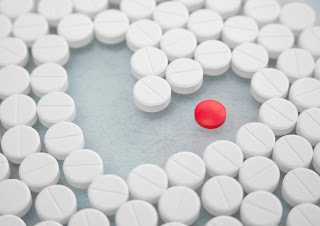Osteoporosis affects 10 million Americans; 8 million women and 2
million men. It’s a disease in which bone loses its mineral content, there
is a change in its structure and bone becomes weaker. A fall, sneeze or bumping
into furniture can cause it to break.
Osteoporosis is a silent disease. You don’t know you have it until
you fall and break a bone. Last year it caused two million fractures. These
fractures can lead to pain, disability and even death. In fact, osteoporotic
hip fractures caused more deaths than breast cancer in women and more deaths
than prostate cancer in men.
Frank Bonura, MD, FACOG, NCMP, CCD, director of Osteoporosis
Program at St. Catherine of Siena Medical Center, a member of Catholic Health
Services, shared some insight in how to identify osteoporosis, how to treat it
and potentially how to minimize your chances of getting it.
How do I know if I have Osteoporosis?
“We can diagnose osteoporosis by measurement of your bone mineral
density (BMD) using a DXA Scan Machine. The BMD is the amount of mineral in an
area of your bone. Osteoporosis can also be diagnosed clinically, if you are 50
years or older, fall from a standing height and sustain a fracture.
You are entitled to a DXA Scan if you are a woman 65 years or
older or a man 70 years or older. Younger
women age 50 to 64 and men age 50 to 69 years old who are at risk for osteoporosis (family history, rheumatoid arthritis, chronic
kidney disease, diabetes, etc.) or are taking medications that cause loss of
BMD are entitled to have a DXA scan.” Dr. Bonura
If I have Osteoporosis, can it be treated?
“Once the DXA results demonstrate a diagnosis of osteoporosis,
your physician should order lab work to confirm if your osteoporosis is due to
your age, family history, a medical condition or to a medication you are
taking. We do that because all medications used for osteoporosis have serious
side effects. If you have a medical condition, we might treat that before
prescribing a medication for osteoporosis. If it’s due to a medication you are
taking, we may adjust the dosage or change the medication.” Dr. Bonura
What is the treatment for Osteoporosis?
“Osteoporosis can be treated but it can’t be cured in all cases.
Some medications used (Fosamax, Boniva, Actonel, IV Reclast, Prolia) stop the
bone cells that destroy the bone. Other medications (Forteo, Tymlos) stimulate
the bone cells that build bone. All of the medications have side effects but
they are rare and only should be used in patients who are at high risk for
fracture.” Dr. Bonura
Do I need Calcium and Vitamin D?
“Calcium is necessary for bone health; therefore, all individuals
should have an adequate amount of calcium and Vitamin D in their diet. If you
are 50 years or older it is recommended that you take 1200mg of calcium per
day. Our diet gives us 600mg per day. To obtain the other 600mg, the best sources
are dairy products. An 8 ounce glass of milk gives us 300mg of calcium, as does
a yogurt or 3 ounces of cheese. You can also get calcium from foods that are
fortified with calcium (cereals, soy milk, and juices) or green leafy
vegetables. If you are lactose intolerant then you can take a calcium
supplement. They are best taken with foods in divided doses. To absorb calcium
you need adequate Vitamin D. Without Vitamin D only 10-15% of calcium is
absorbed. Vitamin D can be obtained from supplements and can also be made when
your skin is exposed to sunlight." Dr. Bonura
For more information about CHS call 1-855-CHS-4500 or visit https://www.chsli.org/.














